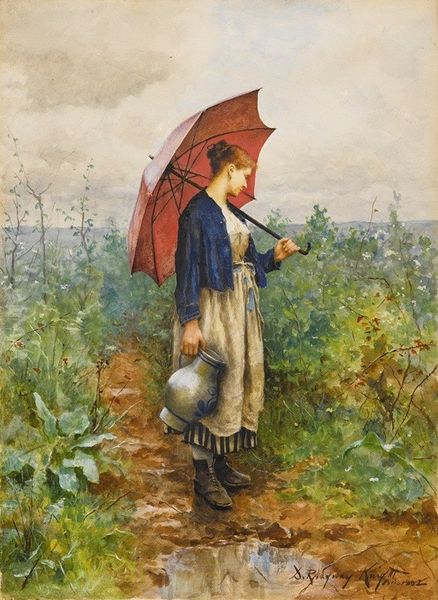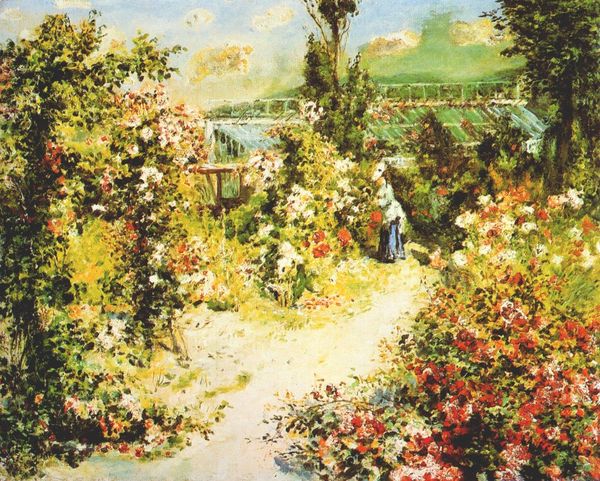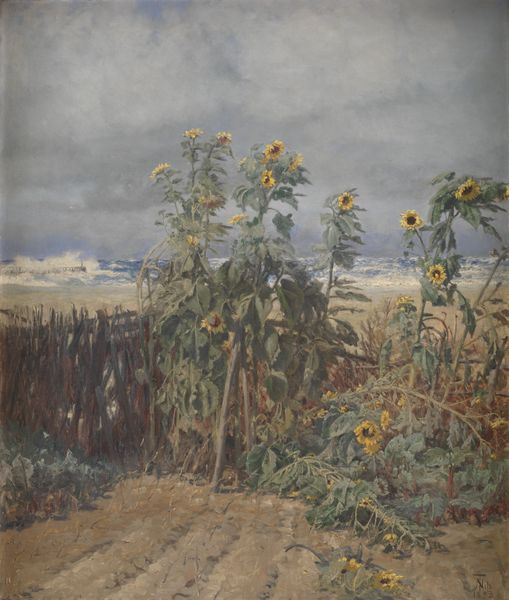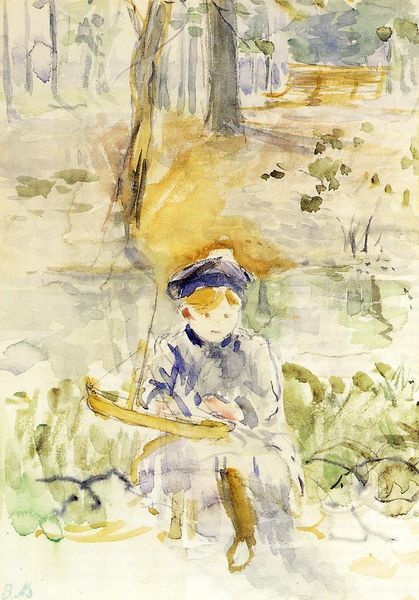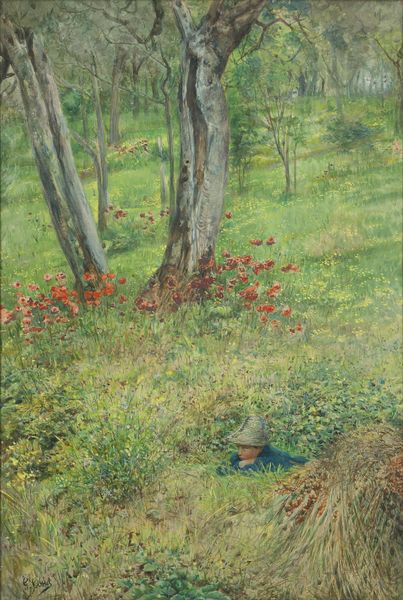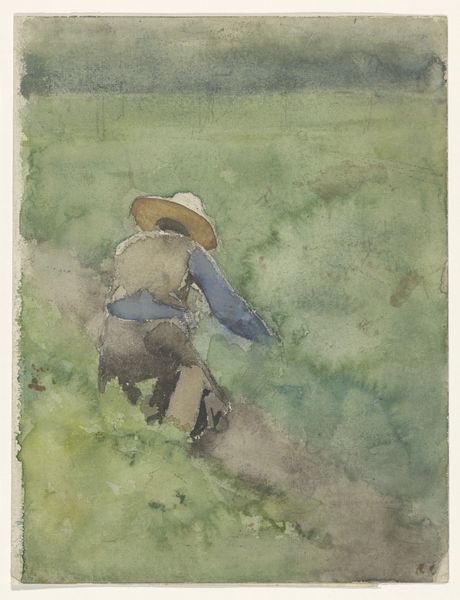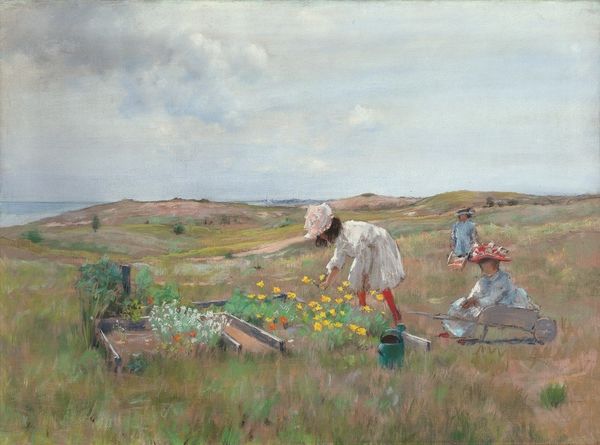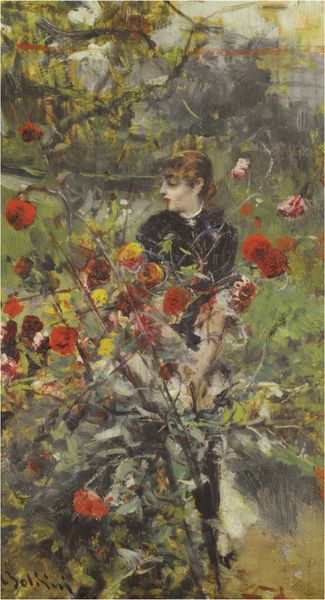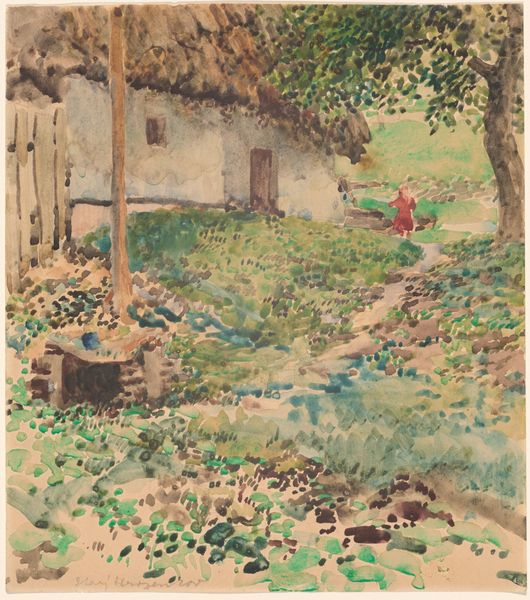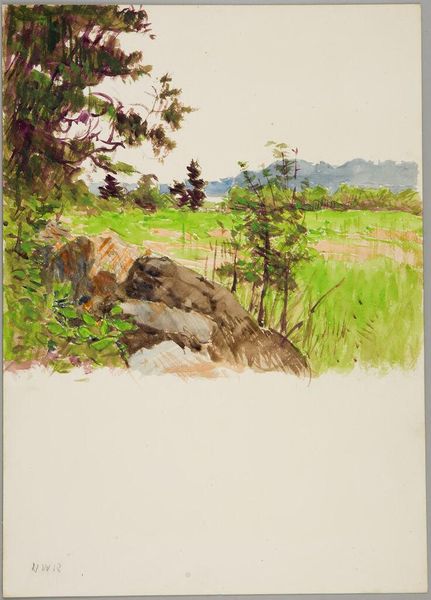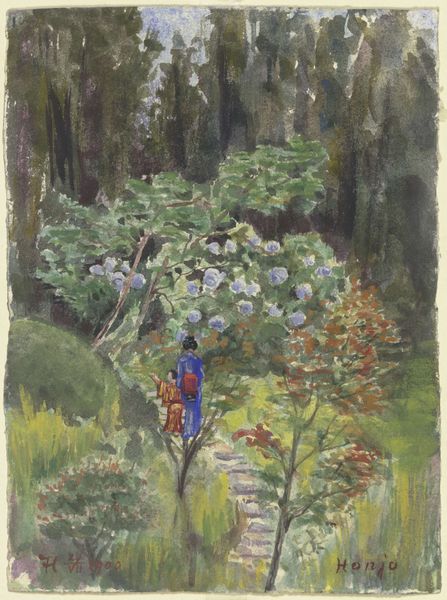
painting, plein-air, watercolor
#
portrait
#
garden
#
painting
#
impressionism
#
plein-air
#
landscape
#
impressionist landscape
#
figuration
#
watercolor
#
genre-painting
#
watercolor
Dimensions: 61 x 93 cm
Copyright: Public domain
Editor: Here we have Carl Larsson’s "In the Kitchen Garden," a watercolor painting from 1883 currently housed in the Nationalmuseum in Stockholm. I’m really struck by the light. It feels like it perfectly captures that hazy, sunny warmth of a late summer afternoon. How do you interpret this piece? Curator: This watercolor offers a glimpse into the social construction of idyllic domesticity in late 19th-century Sweden. Larsson cultivated an image of a happy family life closely tied to nature. Consider the painting's function: it wasn't just a personal artwork; it contributed to a visual language about Swedish identity that resonated with the burgeoning national romanticism of the era. Editor: So, the garden isn’t just a garden; it's also a symbol? Curator: Precisely. The careful cultivation, the presence of the woman perhaps shielding her eyes from the sun… it evokes labor, connection to the land, and a certain national ideal of rural life, promoted at the time in contrast to increasing industrialization. What do you think, then, about its relationship to Impressionism? Editor: Well, the loose brushstrokes and emphasis on light are definitely there, but it feels… I don't know, more purposeful than a purely optical study. It's like the impressionistic technique is serving a specific narrative. Curator: Indeed. Larsson wasn't solely interested in capturing a fleeting moment. He uses impressionistic techniques, but embeds them within a genre painting tradition to present a narrative steeped in cultural and societal values. The work itself is part of a bigger picture, showcasing the ideal Swedish society to its contemporary viewers. Editor: That makes so much sense! I always just saw the pretty garden scene. Now I realize it’s connected to broader cultural ideas about national identity. Curator: Exactly. Art rarely exists in a vacuum; its meaning is shaped by its social and historical context. Editor: I'll definitely look at Impressionism with a broader view now, keeping in mind the sociopolitical implications.
Comments
No comments
Be the first to comment and join the conversation on the ultimate creative platform.

